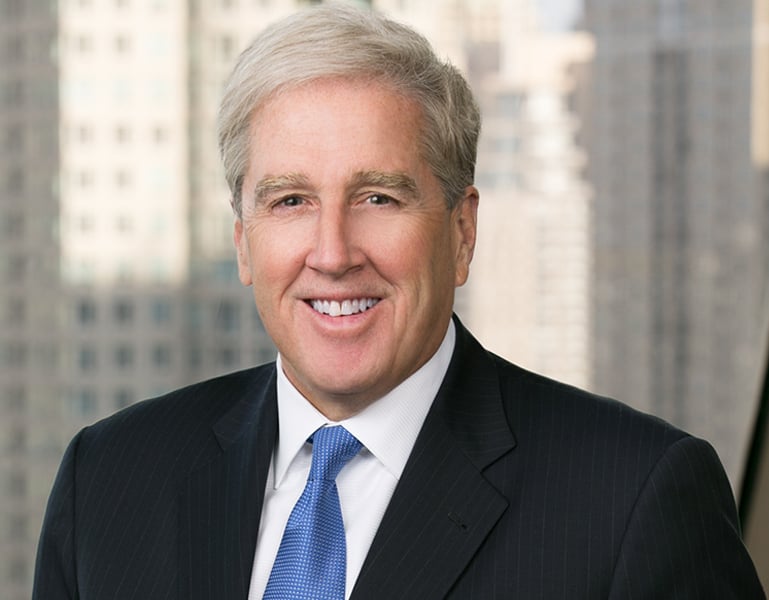FDIC Finalizes Rule to Simplify Capital Calculations for Community Banks
On September 17, 2019, the Federal Deposit Insurance Corporation (the “FDIC”) passed a final rule providing qualifying community banking organizations the ability to opt-in to a new community bank leverage ratio (“CBLR”) framework, which will greatly simplify regulatory determinations regarding capital adequacy and eliminate the need for qualifying community banking organizations to calculate and report quarterly risk-based capital ratios in their Call Reports.
Background
On May 24, 2018, President Trump signed into law the bipartisan Economic Growth, Regulatory Relief and Consumer Protection Act (S. 2155) (the “Consumer Protection Act”), which became the first legislatively enacted regulatory relief bill since the 2008-2009 recession, rolling back various provisions of the Dodd-Frank Act.
As part of the Consumer Protection Act, the Board of Governors of the Federal Reserve System, the FDIC and the Office of the Comptroller of the Currency (collectively, the “Agencies”) were directed to promulgate a rule providing for a CBLR of not less than 8% and not more than 10% for community banks and their holding companies with total consolidated assets of $10 billion or less. Qualifying community banking organizations that met the CBLR would be deemed “well-capitalized” and would not have to calculate the various other ratios currently used by the Agencies to determine capital adequacy.
On February 8, 2019, consistent with the Consumer Protection Act, the Agencies published a notice of proposed rulemaking which, among other things, would have required a CBLR of greater than 9%. On September 17, 2019, the Federal Deposit Insurance Corporation issued a final rule implementing the CBLR framework.
CBLR Framework
Under the final rule, banks that satisfy the criteria of a “qualifying community banking organization,” including meeting the requirement of maintaining a CBLR in excess of 9%, and which choose to opt-in to the CBLR framework, will only be required to report the CBLR ratio, instead of the other additional capital ratios that they are currently required to report (i.e., Total Risk-Based Capital Ratio, Common Equity Tier-1 Capital Ratio and Tier-1 Risk-Based Capital Ratio) under the generally applicable risk-based capital and leverage capital requirements contained in the applicable Agency’s existing capital rules (the “generally applicable capital rules”). The CBLR is calculated under the final rule in a manner consistent with the current calculation methodology for the leverage ratio under the generally applicable capital rules – i.e., the CBLR is calculated as Tier 1 capital divided by average total consolidated assets.
If a qualifying community banking organization otherwise ceases to meet any of the qualifying criteria, the bank will have a grace period of two consecutive calendar quarters to bring itself into compliance, provided that its CBLR is at least greater than 8%. If the bank qualifies for the two consecutive quarter grace period, it will be deemed to be “well capitalized” and will not have to calculate and report the additional risk-based capital ratios under the generally applicable capital rules during such two consecutive quarter period. However, a bank will be required to comply with the generally applicable capital rules and file the relevant regulatory reports containing the additional capital ratios after the two consecutive quarter grace period if the bank is unable to restore compliance with all qualifying criteria during such grace period (including coming into compliance with the greater than 9% CBLR requirement). In addition, a bank will not be eligible for the two consecutive quarter grace period, and will be required to comply with the generally applicable capital rules and file the relevant regulatory reports, if the bank (i) reports a CBLR of 8% or less, or (ii) ceases to satisfy the qualifying criteria due to consummation of a merger transaction.
Qualifying Community Banking Organization Criteria
Under the final rule, to be considered a qualifying community banking organization, a community bank must satisfy all of the following:
- maintain a CBLR of greater than 9%;
- have total consolidated assets of less than $10 billion;
- have total off-balance sheet exposures (excluding derivatives other than sold credit derivatives and unconditionally cancelable commitments) of 25% or less of total consolidated assets; and
- have total trading assets plus trading liabilities of 5% or less of total consolidated assets.
In addition, the bank must not be an advanced approaches banking organization.
How Can Community Banks Opt-in?
Beginning January 1, 2020, a qualifying community banking organization may opt-in to the CBLR framework by completing the associated reporting requirements on its March 31, 2020 Call Report. Thereafter, a qualifying community banking organization may opt-in to, or out of, the CBLR framework by completing the associated reporting requirements for the Call Report for a subsequent reporting period.
To view the full text of the final rule regarding the CBLR framework, click here.
For more information about the Final Rule, please contact James M. Kane at (312) 609-7533, Daniel C. McKay, II at (312) 609-7762, James W. Morrissey at (312) 609-7717, Jennifer Durham King at (312) 609-7835, Juan M. Arciniegas at (312) 609-7655, Mark C. Svalina at (312) 609-7741 or your Vedder Price attorney.
Vedder Thinking | Articles FDIC Finalizes Rule to Simplify Capital Calculations for Community Banks
Newsletter
September 26, 2019
On September 17, 2019, the Federal Deposit Insurance Corporation (the “FDIC”) passed a final rule providing qualifying community banking organizations the ability to opt-in to a new community bank leverage ratio (“CBLR”) framework, which will greatly simplify regulatory determinations regarding capital adequacy and eliminate the need for qualifying community banking organizations to calculate and report quarterly risk-based capital ratios in their Call Reports.
Background
On May 24, 2018, President Trump signed into law the bipartisan Economic Growth, Regulatory Relief and Consumer Protection Act (S. 2155) (the “Consumer Protection Act”), which became the first legislatively enacted regulatory relief bill since the 2008-2009 recession, rolling back various provisions of the Dodd-Frank Act.
As part of the Consumer Protection Act, the Board of Governors of the Federal Reserve System, the FDIC and the Office of the Comptroller of the Currency (collectively, the “Agencies”) were directed to promulgate a rule providing for a CBLR of not less than 8% and not more than 10% for community banks and their holding companies with total consolidated assets of $10 billion or less. Qualifying community banking organizations that met the CBLR would be deemed “well-capitalized” and would not have to calculate the various other ratios currently used by the Agencies to determine capital adequacy.
On February 8, 2019, consistent with the Consumer Protection Act, the Agencies published a notice of proposed rulemaking which, among other things, would have required a CBLR of greater than 9%. On September 17, 2019, the Federal Deposit Insurance Corporation issued a final rule implementing the CBLR framework.
CBLR Framework
Under the final rule, banks that satisfy the criteria of a “qualifying community banking organization,” including meeting the requirement of maintaining a CBLR in excess of 9%, and which choose to opt-in to the CBLR framework, will only be required to report the CBLR ratio, instead of the other additional capital ratios that they are currently required to report (i.e., Total Risk-Based Capital Ratio, Common Equity Tier-1 Capital Ratio and Tier-1 Risk-Based Capital Ratio) under the generally applicable risk-based capital and leverage capital requirements contained in the applicable Agency’s existing capital rules (the “generally applicable capital rules”). The CBLR is calculated under the final rule in a manner consistent with the current calculation methodology for the leverage ratio under the generally applicable capital rules – i.e., the CBLR is calculated as Tier 1 capital divided by average total consolidated assets.
If a qualifying community banking organization otherwise ceases to meet any of the qualifying criteria, the bank will have a grace period of two consecutive calendar quarters to bring itself into compliance, provided that its CBLR is at least greater than 8%. If the bank qualifies for the two consecutive quarter grace period, it will be deemed to be “well capitalized” and will not have to calculate and report the additional risk-based capital ratios under the generally applicable capital rules during such two consecutive quarter period. However, a bank will be required to comply with the generally applicable capital rules and file the relevant regulatory reports containing the additional capital ratios after the two consecutive quarter grace period if the bank is unable to restore compliance with all qualifying criteria during such grace period (including coming into compliance with the greater than 9% CBLR requirement). In addition, a bank will not be eligible for the two consecutive quarter grace period, and will be required to comply with the generally applicable capital rules and file the relevant regulatory reports, if the bank (i) reports a CBLR of 8% or less, or (ii) ceases to satisfy the qualifying criteria due to consummation of a merger transaction.
Qualifying Community Banking Organization Criteria
Under the final rule, to be considered a qualifying community banking organization, a community bank must satisfy all of the following:
- maintain a CBLR of greater than 9%;
- have total consolidated assets of less than $10 billion;
- have total off-balance sheet exposures (excluding derivatives other than sold credit derivatives and unconditionally cancelable commitments) of 25% or less of total consolidated assets; and
- have total trading assets plus trading liabilities of 5% or less of total consolidated assets.
In addition, the bank must not be an advanced approaches banking organization.
How Can Community Banks Opt-in?
Beginning January 1, 2020, a qualifying community banking organization may opt-in to the CBLR framework by completing the associated reporting requirements on its March 31, 2020 Call Report. Thereafter, a qualifying community banking organization may opt-in to, or out of, the CBLR framework by completing the associated reporting requirements for the Call Report for a subsequent reporting period.
To view the full text of the final rule regarding the CBLR framework, click here.
For more information about the Final Rule, please contact James M. Kane at (312) 609-7533, Daniel C. McKay, II at (312) 609-7762, James W. Morrissey at (312) 609-7717, Jennifer Durham King at (312) 609-7835, Juan M. Arciniegas at (312) 609-7655, Mark C. Svalina at (312) 609-7741 or your Vedder Price attorney.



